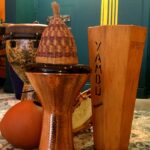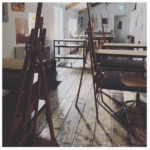Guide to labelling your prints
We often hear about fine art prints, original prints and limited editions but do we know the differences? Sometimes the terms ‘original’ or ‘limited edition’ can be very confusing for artists and public alike. The word ‘print’ contributes to the confusion as it can also be used to denote the mass reproduction of an original image. This combined with the digital printing process and the evolution of fantastic papers for laser printers, you can be selling or buying something completely different of what you think! We hope this guide to labelling your prints helps to clarify the business of print!
What is exactly an original print? An original print or multiple original print, is an original artwork. It is an impression obtained by transferring ink from a matrix (or matrices) to another surface, usually paper. Original prints are multiple artworks made by any printmaking method or technique to be printed a number of times to obtain multiple identical prints, also known as a multiple-originals. Multiple refers to a series of identical artworks printed in a strictly limited ‘run’, or ‘edition’, where the matrix or matrices are destroyed to guarantee that no more prints will be pulled from them.
What is a ‘fine art print’, or an ‘art print’? Confusingly, a fine art print, or art print, refers to a digital copy, a reproduction of an original artwork, from paintings, drawings, photo collages, etc… They might be of high quality, are increasingly common, but it is not the same as an original print, it is closer to what we know as a ‘poster’. You may also see these referred to as Giclée Print – a digital printing process which combines pigment based inks with high quality paper, often cotton rag paper, bartya paper or canvas. The combination of the paper and the printing process give the print a soft textured feel which is closer to the feel of the original painting.
What is an edition or a limited edition? An edition is the total number of identical prints of an image pulled from a plate or plates and authenticated by the artist. Each print in an edition is signed and numbered by the artist. e.g. 5/40 is the fifth print in an edition of forty. Often a number of other prints – artist’s proofs, printer’s proofs, bon à tirer, and hors commerce (“not for trade”) prints – are made at the same time but are not considered to be part of the numbered edition. To guarantee a limited edition, the artist or printer can “strike” the plate by incising an X on the printing face after completion.
How to label your prints?
The edition should be numbered in the lower left hand corner, signed by the artist in the lower right hand corner (along with date if desired), and the title must be enclosed in double quotes centred between numeration and signature. To sign your prints use only a graphite pencil or a coloured pencil for bleed prints.
PRINTMAKING TERMS
ARTIST PROOFS (AP) : A limited number of artist’s proofs may also be pulled, but not more than 10% of the total edition, and these are marked A/P, signed by the artist and numbered with roman numerals. e.g. III/ V. The AP are reserved for the artist, and not included in the numbered edition.
B.A.T. (“Bon a tirer”): This is a French term meaning ‘good to pull’. When the image has been finalised through proofing, the final proof is marked B.A.T. and signed by the artist. The B.A.T. is then used as a reference when printing the full edition.
BLEED PRINT: In a ‘Bleed Print’ the printed area is larger than the actual paper being printed on, so there are no margins.
ESTATE PROOF/ STAGE PROOF ( EP) A state proof is a proof that is taken each time work is done to a plate to check and record the progress. State proofs are of great interest to historians and collectors.
H.C. (“Hors Commerce”) These are the prints outside of the regular commercial run so are not for sale. These are marked H.C. signed by the artist and numbered in roman numerals. e.g. III/IV
PRINTER: The specialist who provides technical aide throughout the printing process. A master printer may have a group of assistants. Historically, printmaking has been characterised by a divided production process, where artist and printer work collaboratively but accomplish different tasks.
PRINTER’ S PROOF (PP): This is the print reserved for the printer or the workshop where the edition has been printed. These are not comercial prints, and the number of prints are agreed with the artist. The PP are reserved for workshop records and can be used for demonstration, exhibitions or exchanges.
PROOFING: Proofing is the process of pulling a print to check colour, registration, weight of ink impression, and how the print looks on different papers. A proof is a preliminary print pulled to examine the progress of the work at successive stages.
PUBLISHER: The entity responsible for funding the development and production of an edition. Commonly, this is in exchange for either a percentage of the edition or of the profits from its sale. Some workshops or print-shops publish their own editions.



















